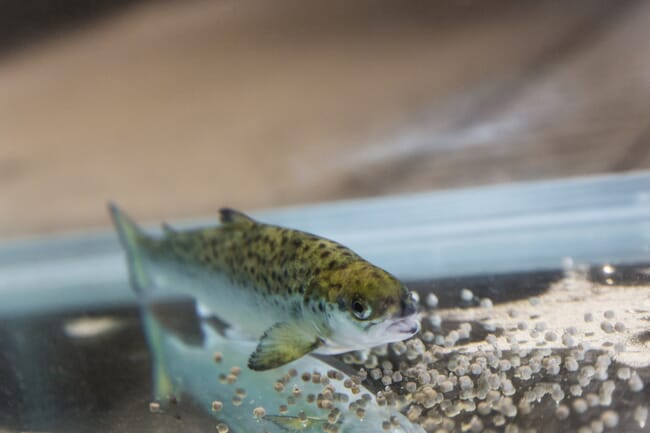The research was part of the project “The importance of nutrition for skin, intestine and gill health in salmon”, in which Nofima collaborated with the University of Gothenburg and Oslo University Hospital. The project was funded by the Norwegian Seafood Research Fund (FHF).

“We hope the project results provide new knowledge that will help improve the function and health of barrier tissues, thereby contributing to better fish welfare and increased survival rates, and fewer losses after transferring to sea,” says Sven Martin Jørgensen, head of fish health at FHF .
There is a shortage of marine omega-3 and there are limits as to how much zinc is allowed in salmon feed, due to environmental considerations. However, at the same time, these nutrients are important for salmon. Therefore, Nofima senior scientist Gerd Marit Berge believes it is especially important to utilise omega-3 and zinc well, and this means that knowledge about interaction is important.
“This is one of only a few projects where scientists are given the opportunity to delve into the effects of interactions between different nutrients. The project group worked really well together due to the cooperation of several disciplines within the fields of nutrition, feed, health and genetics. We found important interaction effects and I feel that there’s a lot to gain by working in this manner,” says Berge.
There are several reasons why scientists have examined the correlation between zinc, the marine omega-3 fatty acids EPA/DHA and the skin, intestine and gill barrier tissues of salmon. The barrier tissues are the fish’s first-line of defence against all kinds of external influences – from poor water quality and handling to exposure to pathogens. In a time when more and more salmon are held in recirculated water, the fish are exposed to a completely different aquatic environment with different densities of fish, microbiota and particles compared to flow-through systems. At the same time, the composition of feed is also changing, with a high proportion of plant-based raw materials. There isn’t enough knowledge about how this affects the function of the barrier tissues.
The addition of zinc in salmon feed is controversial. On the one hand, salmon require this mineral so it needs to be part of their diet, but on the other hand, one wishes to have the lowest possible zinc content in fish slurry if it is to be used as a plant fertiliser. But at the same time, one is also aware that zinc from the relevant sources has relatively low accessibility regarding salmon.
“So, when it comes to both marine omega-3 fatty acids and zinc, we wanted to test whether changes in feed composition would affect the health and robustness of salmon,” says Berge.
The tests were conducted on salmon – from parr to post-smolt – in RAS at Nofima in Sunndalsøra, where extensive samples were taken during the tests.
The amount of zinc in the feed has a distinct effect on the composition of phospholipids regarding skin, intestine and gill barrier tissues. Phospholipids are building blocks in cell membranes, and changes in composition can be of crucial significance regarding the tissues’ function as a barrier against external influences. The level of omega-3 in the feed also seems to have an effect on the utilisation of zinc, in that it affects the absorption of zinc in the intestine and the level of zinc in whole salmon.
“We have noticed that it is necessary to have enough omega-3 to best utilise zinc in the feed, and enough zinc is important to achieve a good composition of phospholipids, which in turn provides a good barrier function. Such interaction between nutrients is important to understand,” says Berge.
Reduced content of the omega-3 fatty acids EPA and DHA in the feed provided reduced content of the same fatty acids in phospholipids in the skin, intestines and gills.
The research shows that less omega-3 in the feed can reduce the intestinal barrier function by disrupting fluid absorption and salt balance regulation. Since the intestinal function changes, one can imagine that the level of omega-3 in feed can also affect the absorption of nutrients other than zinc.
The research also shows that the various layers of the skin are strengthened by omega-3 and zinc, and that both of these nutrients contribute to strengthening the ability to heal wounds.
Different levels of both zinc and omega-3 in the gills led to altered expressions in a large number of genes, especially when the salmon are transferred to seawater. The genes were linked to functions such as tissue organisation, metabolism and signal transmission.
“In general, the changes in gene expression suggest a comprehensive reorganisation of gill tissue when transferring the salmon to sea water. Salmon go through a process of major physiological changes before they are transferred to seawater, and if we can give them one type of feed that better meets the demands of this period, it can contribute to higher survival rates at sea,” says Berge.



